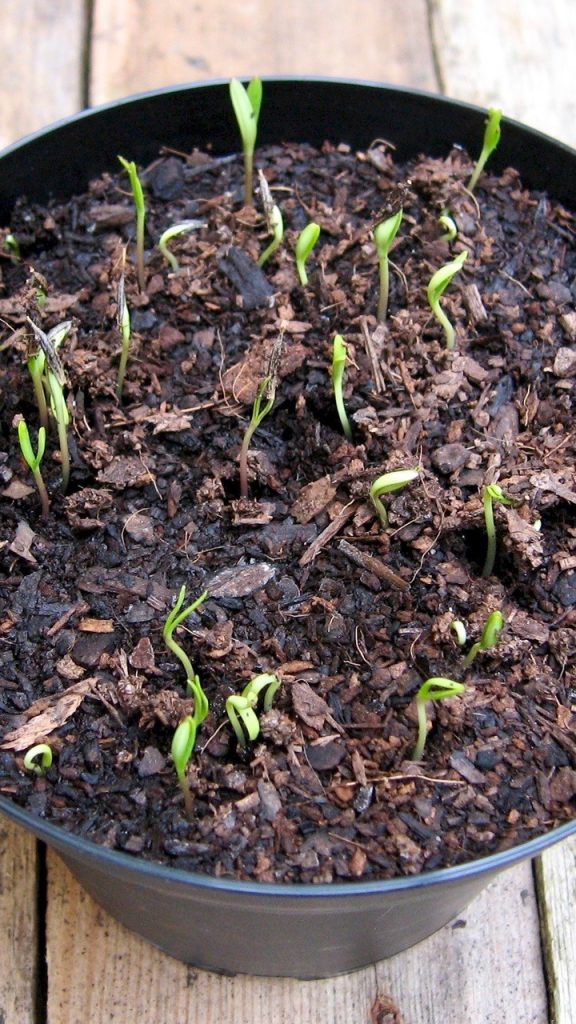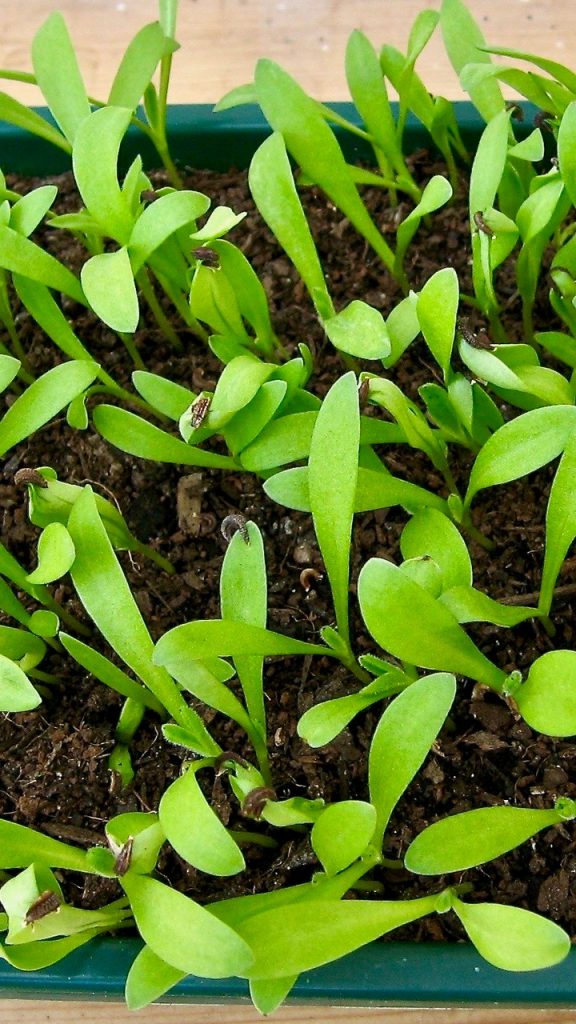Why pay the financial and environmental costs of a propagator, when our own well-heated homes offer plenty of ideal places to germinate seeds and nurture seedlings?
“Sow your seeds and germinate them in a heated propagator at… blah, blah, blah.” If I had a penny for every time I’ve read or heard this outmoded gardening advice, I’d be raking it in.

Even in the third decade of the 21st century, with our inextricably entwined climate, nature, ecological and pollution crises banging on the door, so much advice from a bygone era still gets lazily repeated – increasingly by those more adept at googling than gardening – like a stuck record. As someone who retired their electric propagator to the loft decades ago – and has never missed it – seeing the ‘heated propagator’ wisdom trotted out for the umpteenth time truly grates.
Bar a few some-like-it-hot seeds (think cucumbers), most will germinate and come up anywhere that’s essentially warm. At this time of year, that means putting them inside those big, year-round and already-paid-for ‘propagators’ we live in: our homes. This is bad news for those flogging flash and pricey heated propagators. Some now come with added ‘grow lights’ adding to their complexity, meaning more raw materials to manufacture them, more energy to run them, and an even higher price tag (£100-£200 for a typical model).
Even the simple, unheated models comprising a base and a transparent lid are made from oil-derived plastic, which pollutes every corner of our living world – while the gardening world remains lazily content with such pollution-busting greenwash as changing the colour of plastic plant pots, and mailing magazines in paper envelopes…
You don’t have to go far to seek out that home-grown heat to help get almost any seeds off to a flying start. Living rooms, kitchens, bathrooms and utility rooms are usually more than warm enough to germinate most seeds. Airing and boiler cupboards are especially cosy and maintain pretty constant warmth; if you live in an older home, check out the one under your stairs. Even unheated rooms, especially those facing south and west, will be warmer by both day and night than an unheated greenhouse at this time of year.

Unless you’re sowing fine, dust-like seeds (think begonia) on the surface of a quality peat-free compost, light isn’t essential for germination, which happens in the dark. This means that sown seeds can go anywhere indoors that’s warm: on a windowsill, on the top of (or in) a cupboard (warm air rises), on shelves, on an indoor clothes dryer, on a table, on the floor behind the sofa – take your pick. I start all my seeds off using only the ambient warmth in our living room, arranged in stackable trays to utilise vertical space.
The most important rule for germinating seeds inside your whole-home propagator is to keep an eye on them; the moment they come up and push through the surface of the compost, the seedlings need moving into bright light. A sunny windowsill is a good, solar-powered first stop, or they can go into a porch, conservatory or greenhouse. Remember that seeds sprout faster when it’s warmer, and vice versa. I check pots and trays several times a day, because some fast movers will break the surface just a few hours after germinating. Keep an eye on them! The warmer it is, the more checks are needed – and with seed raising, it’s the real fun part. Keep an extra-vigilant eye on seeds in your home’s ultra-warm spots, such as an airing cupboard. The near-constant warmth from hot water tanks and boilers can be intense, so it pays to wrap pots and trays inside a plastic bag to stop them drying out, and to avoid sitting them directly above the source of warmth.
Central heating radiators are an obvious source of home-found warmth, but by design they emit prolific amounts of direct, drying heat, which can rapidly dry out containers of compost placed either directly on or near them. A cannier way to tap into this warmth is to lay a floorboard-thickness length of timber along the top of a radiator once the heating has gone off at night, and sit your pots on it; the residual overnight heat will gently warm the compost without drying it out. At bedtime, containers can also be stood on warm mantlepieces, which cool down gently through the night.

If bringing pots and trays into your living space is a no-no, it’s worth assessing what existing sun-powered options are already attached to your home-cum-propagator. Porches, cold frames, unheated conservatories, and wall-mounted, free-standing or lean-to greenhouses, all heat up quickly in March and April’s strengthening sun, and are warm enough during daylight hours to germinate most seeds. However, warmer, sunny days mean clear and chilly, frost-prone spring nights, so you might need to bring your seeds indoors in the evening, returning them to your sun-warmed space the next day.
The sun’s glazing-magnified rays can quickly bake and dry out compost, so cover pots and trays with a sheet of newspaper or cardboard; this shades the compost, slowing down evaporation. On mild and bright but overcast days, a cut-open empty compost sack, laid black side up, will gently warm up any containers underneath (try it on a cloudy but bright day and feel what I mean).
If you have none of the above, and you only have a few seeds to sow, grab some glass jam jars (the bigger and wider the better). A decent-sized inverted jar will fit over a small pot of compost, warming it in the sun, with the advantage that it stops the pot from drying out (you can also put the pot inside the jar, barely tightening the lid). Your ‘solar jars’ can be stood during daytime at the base of a sunny wall, or on an outside windowsill, but bring them in on clear, frost-prone nights.
Just think: next time that old ‘sow in a heated propagator’ advice pops up, chances are you’ll already be sitting comfortably, seedlings popping up around you, inside your very own warm, snug and plastic-free propagator…
Text and images © John Walker
Find John on Twitter @earthFgardener


